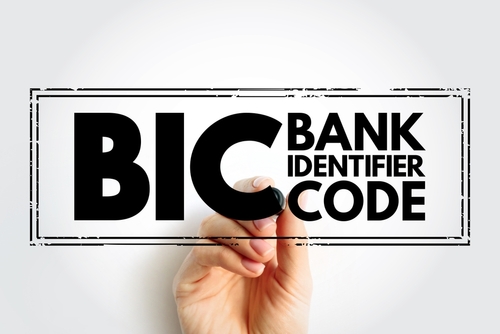When you transfer money internationally, you may come across the term Bank Identification Code (BIC). While it might sound technical, understanding BICs is key to ensuring your international transactions are accurate and efficient.
This blog breaks down everything you need to know about BICs, their role in global finances, and how they facilitate smooth money transfers. By the end, you’ll have the clarity and confidence to make your next international transfer hassle-free.
What Is a Bank Identification Code?
A Bank Identification Code (BIC), also referred to as a SWIFT code, is an internationally-recognized system used to identify banks and financial institutions. Each BIC is unique and serves as a digital address for a particular bank. This code ensures that funds and communication are directed to the correct bank during international transactions.
For example, if you’re sending money to a bank in the Philippines, that institution’s BIC ensures your funds are routed to the right branch. Curious to learn how those money transfers work? Check out this guide on bank deposits in the Philippines with zero fees.
The Role of BICs in International Money Transfers
International money transfers involve a complex network of banks and financial intermediaries. BICs simplify this process. Here’s how:
- Routing Funds Accurately
With a unique BIC assigned to each financial institution, there’s no confusion or misdirection of funds.
- Enhancing Global Communication
BICs are part of the SWIFT messaging framework. Financial institutions use these codes to send secure instructions about payments and account details.
- Reducing Errors
By identifying the exact financial institution, BICs minimize human or system errors during fund transfers.
How to Find a Bank’s BIC for Your Transfers
Need to locate a bank’s BIC? Here are three common ways:
- Bank Statements or Online Accounts
Most banks display their BICs on account statements or within their online banking portals.
- The Recipient’s Assistance
Ask the recipient to provide their bank’s BIC, as they will typically know it or can obtain it quickly.
- Official Bank Websites or Tools
Many banks list their BICs on their official websites, or you can use tools like this SWIFT Code Checker to confirm.
Benefits of Using BICs in Global Finances
Wondering why BICs are so important? Here are their top benefits:
- Speed
BICs streamline operations for quicker transaction times. You’ll appreciate this when you’re transferring funds to meet tight deadlines.
- Accuracy
Ensure payments reach the intended recipient without errors, avoiding costly or time-consuming corrections.
- Security
By adhering to strict international standards, BIC-based transactions provide heightened security for senders and recipients alike.
- Global Recognition
Accepted universally, BICs are a foundational element in international banking.
For more on international money transfers and the factors affecting them, read our in-depth guide to how long international transfers take.
Do You Need a BIC for Domestic Transactions?
BICs are primarily used in cross-border transactions. If you’re sending money within the same country, you may only need details like the account number and a sort code or routing number. Need more information? You can also explore the difference between SWIFT codes and IBANs for additional clarity.
Tips for Smooth International Transfers with BICs
Follow these proven tips to avoid headaches when using BICs:
- Double-check the Code
A single typo in the BIC can send your transfer astray. Always verify it with trusted sources.
- Include All Required Information
Most international transfers require both the BIC and the recipient’s International Bank Account Number (IBAN). Ensure you have both.
- Use Trusted Services
A reliable money transfer platform can make the process seamless. Platforms like Remitly offer secure and easy solutions to send money across borders. Check out how you can get better rates for transfers to Mexico.
Frequently Asked Questions (FAQs)
What’s the difference between a BIC and a SWIFT code?
There’s no difference! BIC and SWIFT codes are two terms for the same concept. They’re simply naming conventions used interchangeably.
Can I use a BIC for every transfer?
Yes, but it’s generally required only for international money transfers.
How many digits does a BIC have?
A standard BIC is either 8 or 11 characters long. The first 8 characters are mandatory and identify the bank and country, while the last 3 (if present) identify the branch.
What happens if I use the wrong BIC?
If the BIC is incorrect, your transfer may be delayed, misdirected, or canceled. Always verify the code’s accuracy to avoid complications.
Where can I find a comprehensive list of BICs?
SWIFT maintains an official directory of all BICs worldwide. Many financial platforms also offer easy lookup tools.
